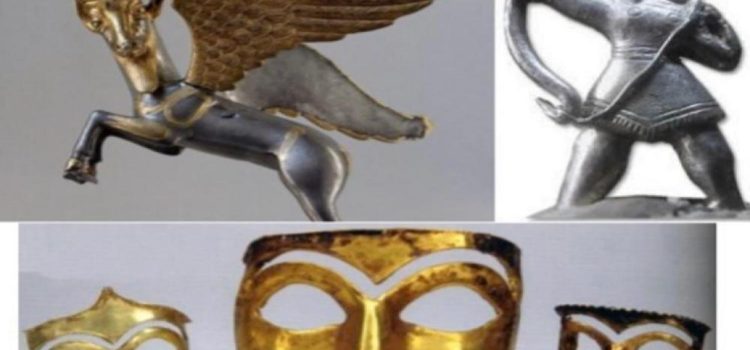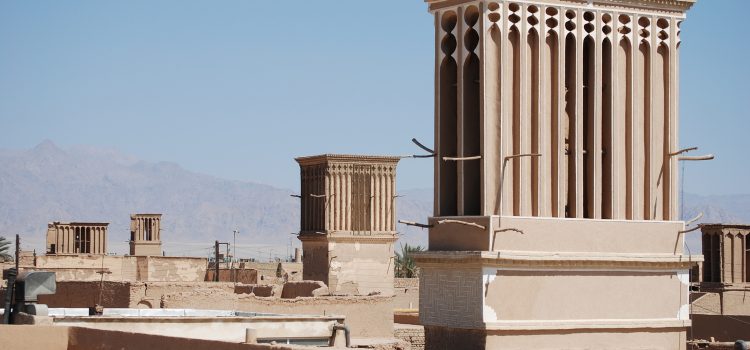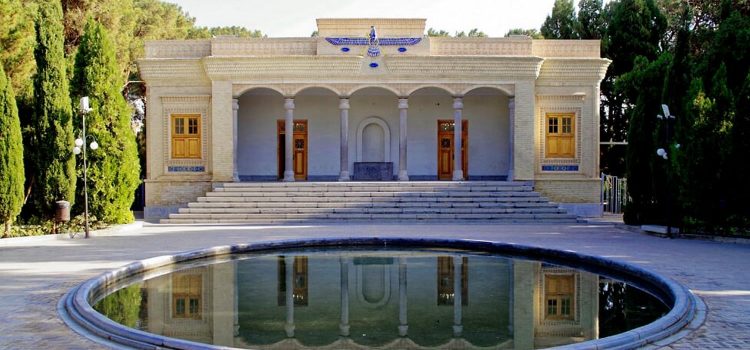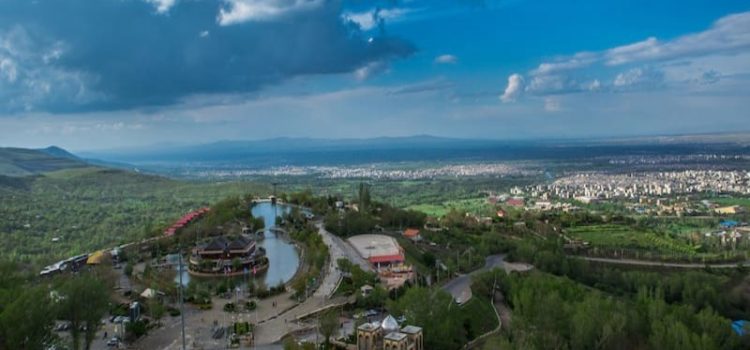Cueva de Kalmakareh
Kalmakareh: una cueva histórica y misteriosa.
El tesoro de Kalmakareh fue descubierto en 1989 por un cazador local.
Kalmakareh: una cueva histórica y misteriosa.
El tesoro de Kalmakareh fue descubierto en 1989 por un cazador local. La cueva de Kalmakareh se encuentra a 20 km al noroeste de Pol-e Dokhtar, en la provincia de Lurestan. La colección está formada por diferentes objetos metálicos, entre los que se encuentran vasijas, ritones, figurillas de animales y humanos, máscaras, placas, adornos, etc. Los nombres escritos en algunos objetos indican una estrecha conexión con el horizonte cultural del período neoelamita. Las inscripciones, arameo antiguo, neoasirio y neoelamita, sugerían la existencia de una nueva dinastía local desconocida en Lurestan, concomitante con el período neoelamita; que inicia nuevas discusiones en la investigación arqueológica y la historia del arte de este período en el oeste de Irán. Los objetos descubiertos son en su mayoría de plata.
Jardín de Dolat Abad
El jardín de Dolat abad es uno de los nueve jardines persas registrados como sitios del patrimonio mundial de la UNESCO y fue construido en 1750.
Su torre de viento, la más alta de su tipo, de 34 m de altura, fue construida en la era Qajar.
El jardín Dolat abad es uno de los nueve jardines persas registrados como Patrimonio de la Humanidad por la UNESCO que fue construido en 1750. Su torre de viento, que es la más alta de su tipo, 34 m de altura, fue construida en la era Qajar. Hay demasiados árboles altos y densos alrededor del jardín para esconderlo y protegerlo y también para mantener su humedad. También hay muchas piscinas dentro y fuera que están conectadas entre sí. En realidad, la casa era para el gobernante de Yazd, Mohammad Taghi Khan Bafghi. Puedes encontrar la característica más significativa del jardín en los vidrios polarizados de las ventanas del salón principal. Al visitar el jardín y su agua que pasa, te olvidas por completo que estás en medio del desierto.
Yazd Windcatcher
Badgir or wind tower is a kind of tower constructed on top of the roof of the houses in Yazd and other cities in the desert to capture wind flow and to lead it to the room under for ventilation.
Do not worry about hot wind because a cool water basin under the tower would add some moisture to it and make it cooler.
Badgir or wind tower is a kind of tower constructed on top of the roof of the houses in Yazd and other cities in the desert to capture wind flow and to lead it to the room under for ventilation.
Do not worry about hot wind because a cool water basin under the tower would add some moisture to it and make it cooler.
How does it work when the wind stops? very ingenious, Some cool weather of the last night is enough to make an
airflow at the day when it begins to get hot in the rooms.
Le temple du feu
Le temple du feu à Yazd est un édifice qui abrite le feu Bahram (feu principal).
Après avoir été déplacé à plusieurs reprises et avoir survécu aux assauts et contraintes religieuses depuis la chute des Sassanides (battus par les musulmans), …
Le temple du feu à Yazd est un édifice qui abrite le feu Bahram (feu principal). Après avoir été déplacé à plusieurs reprises et avoir survécu aux assauts et contraintes religieuses depuis la chute des Sassanides (battus par les musulmans), ce feu sacré a trouvé finalement le calme dans ce bâtiment.
Le temple a été construit et financé par les parsis, les coreligionnaires zoroastriens habitant en Inde actuellement et qui avaient fuit après la conquête arabe de l’Iran.
D’après la légende, le feu ne s’est jamais éteint depuis le 5ème siècle.
Le feu est le plus important des quatre éléments sacrés pour les Zoroastriens. Il est source de chaleur et de lumière, essentielles à la vie et il n’est jamais souillé (les zoroastriens tiennent à ne pas souiller les 4 éléments).
Sur la façade du bâtiment, vous pouvez voir l’emblème Farvahar avec la devise : “bonne pensée, bonne parole, bonne action”.
A l’intérieur de la salle, le feu est protégé derrière une vitre, il brûle du bois de noyer et d’abricotier. Chaque matin un mage ravive les braises de la nuit.
Dans ce modeste édifice, C’est la lumière d’une civilisation millénaire qui scintille et qui ne s’est jamais éteinte.
Hamedan
Hamedan is the ancient capital of the Medes kingdom, the predecessors of the Persians of the same Indo-Iranian lineage.
The remains of Hegmataneh, so the city was called in Antiquity, can be visited at the archaeological site under the same name in the city without any trace of 7 legendary walls surrounding the city is found, each one had to be colored differently, one gold the other silver according to Herodotus.
Hamedan is the ancient capital of the Medes kingdom, the predecessors of the Persians of the same Indo-Iranian lineage.
The remains of Hegmataneh, so the city was called in Antiquity, can be visited at the archaeological site under the same name in the city without any trace of 7 legendary walls surrounding the city is found, each one had to be colored differently, one gold the other silver according to Herodotus.
The city was on the royal road to Mesopotamia and the decisive defeat of the Sassanids against the Muslim army in 636 A.D., which turned the page in Persian history, happened at Nahavand 110 km away.
Its geographical location makes an ethnic crossbreeding, the population being mixed with Kurds, Turks, and Lurs and Laks presents a demographic wealth.
The great scholar and philosopher Avicenna was to find his composure here and the two biblical figures Ester (wife of Achaemenid king Xerxes) and his uncle Mourdekhay, a courtier, were buried in a humble mausoleum in the city center.
To integrate the old circular city plan into a new modern architecture, the German engineer in charge of the project, created a central roundabout from which 6 arteries going through the city started, the double arcade square has 12 small domes.
The other surviving site from the ancient times, Ganj-Nameh (the treasure map) called by the locals, takes us to the foot of Mount Alvande (3510 m) which dominates the city. The site has two inscriptions of Darios and Xerexes in cuneiform noting the family tree of Darios in order to justify his Achaemenid lineage. In the end of the day The tepe of Abass-Abad offers a panoramic view of the city.
Hamedan is known for its ceramic designs and a palette typical of the region.





